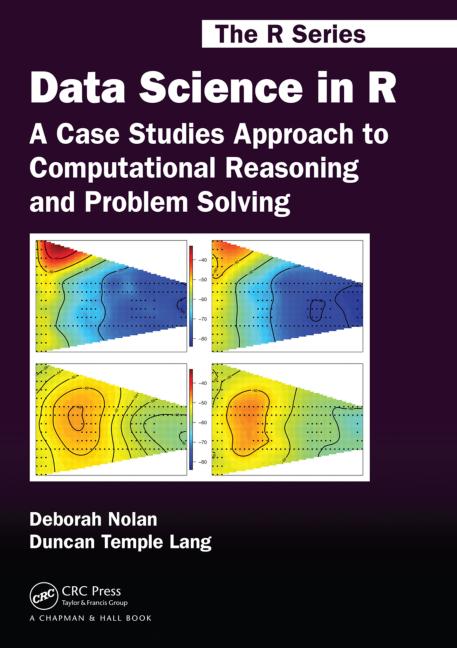
Features
- Explores how computing is done for a broad range of data science problems
- Includes authentic real-world data analysis projects that tie concepts into a data science workflow and illustrate the everyday activities of data scientists across a spectrum of fields
- Shows how to read and transform raw data, manipulate and visualize the resulting data, and use statistical techniques to solve a problem or understand relationships between variables
- Describes the use of simulation to understand stochastic processes and model interesting situations
- Covers various data technologies, including databases, visualization with KML, and scraping data from Web pages with HTTP requests and text processing
Summary
Effectively Access, Transform, Manipulate, Visualize, and Reason about Data and Computation
Data Science in R: A Case Studies Approach to Computational Reasoning and Problem Solving illustrates the details involved in solving real computational problems encountered in data analysis. It reveals the dynamic and iterative process by which data analysts approach a problem and reason about different ways of implementing solutions.
The book’s collection of projects, comprehensive sample solutions, and follow-up exercises encompass practical topics pertaining to data processing, including:
- Non-standard, complex data formats, such as robot logs and email messages
- Text processing and regular expressions
- Newer technologies, such as Web scraping, Web services, Keyhole Markup Language (KML), and Google Earth
- Statistical methods, such as classification trees, k-nearest neighbors, and naïve Bayes
- Visualization and exploratory data analysis
- Relational databases and Structured Query Language (SQL)
- Simulation
- Algorithm implementation
- Large data and efficiency
- Suitable for self-study or as supplementary reading in a statistical computing course, the book enables instructors to incorporate interesting problems into their courses so that students gain valuable experience and data science skills. Students learn how to acquire and work with unstructured or semistructured data as well as how to narrow down and carefully frame the questions of interest about the data.
Blending computational details with statistical and data analysis concepts, this book provides readers with an understanding of how professional data scientists think about daily computational tasks. It will improve readers’ computational reasoning of real-world data analyses.





 雷达卡
雷达卡






 提升卡
提升卡 置顶卡
置顶卡 沉默卡
沉默卡 变色卡
变色卡 抢沙发
抢沙发 千斤顶
千斤顶 显身卡
显身卡










 京公网安备 11010802022788号
京公网安备 11010802022788号







